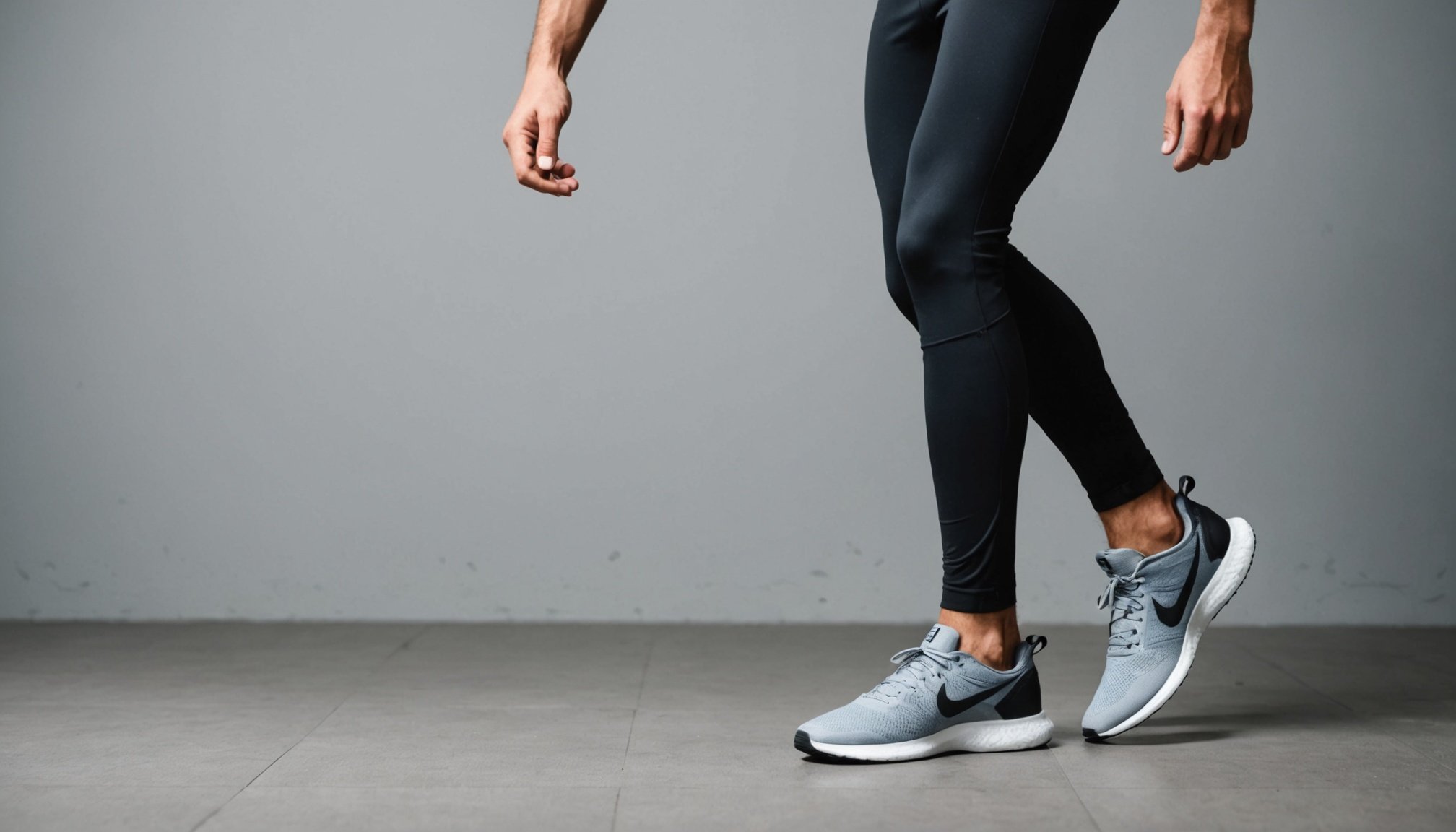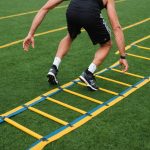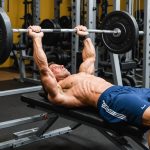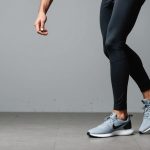Squat. It sounds so simple, doesn’t it? You lower your body towards the ground, bending at the knees and pushing your hips backward, then rise back up. Yet, there’s much more to the humble squat than meets the eye. The depth of your squat, your posture, and even the shoes you wear can significantly influence the effectiveness of this fundamental exercise.
Over the years, scholars have conducted numerous studies to shed light on this correlation. In this article, we will delve into the role of shoe type in performing squats, examining the effects on joint, hip and knee flexion, and assessing the implications for weightlifting and other sports.
Also to see : Can the inclusion of agility ladders in workouts improve muscular coordination?
The Mechanics of a Squat:
Before we begin, let’s get a clear understanding of the mechanics of a squat. A squat is a complex, compound movement requiring strength, stability, and mobility. When performing a squat, muscle groups like the quadriceps, hamstrings, gluteal muscles, and the muscles of the trunk are engaged.
The squat begins with the hip and knee joints in a relatively extended position. The individual then flexes at the hips and knees, lowering the body towards the ground while keeping the trunk as upright as possible. The depth of the squat is typically measured by the angle of hip flexion, with a greater angle indicating a deeper squat.
In parallel : How does the angle of incline affect muscle activation in bench presses?
How Shoes Influence Squat Position and Depth:
Shoes can play a significant role in determining squat depth and position. Some weightlifters prefer to squat barefoot, arguing that it provides a more solid platform for lifting and allows for better proprioception – the ability to sense the position and movement of one’s body. However, not everyone agrees with this sentiment.
Weightlifting shoes with an elevated heel can alter squatting mechanics, potentially improving performance and reducing the risk of injury. The heel lift provided by these shoes can enhance ankle flexion, allowing the lifter to maintain an upright trunk position and reach a greater squat depth.
A study with the DOI: 10.1519/JSC.0000000000000972 found that weightlifting shoes can lead to greater knee flexion compared to barefoot squatting. This increased flexion can contribute to a deeper squat and may also help to distribute the load more evenly across the lower body muscles, reducing the strain on any one muscle group.
The Role of Shoe Type in Weightlifting:
Weightlifting requires significant strength and stability, and the type of shoe worn can heavily influence performance. As we mentioned earlier, many weightlifters prefer shoes with an elevated heel. This preference isn’t just about squat depth; it’s also about the transfer of force.
When lifting heavy weights, having a solid platform to push against is crucial. Weightlifting shoes are designed with a hard, non-compressible sole, providing this platform. A study with the DOI: 10.1519/JSC.0b013e3181e7252d found that lifting in shoes with a hard sole can result in more efficient force transfer, leading to improved performance.
Shoes and Posture in Other Sports:
The significance of shoe type isn’t limited to weightlifting. In various sports, the right footwear can significantly affect an athlete’s posture and performance.
Basketball players often wear shoes with ankle support to help maintain proper posture during jumps and landing, reducing the risk of injury. Similarly, football players wear cleats designed to provide traction on the field, helping them maintain balance and stability.
In the realm of running, the debate around footwear is ongoing. Some runners prefer minimalist shoes, arguing that they promote a more natural running posture. Conversely, others choose shoes with ample cushioning for better shock absorption and comfort.
In any sport, the key is to choose shoes that support the specific demands of the activity, taking into account factors like the surface you’ll be on, the movements you’ll be making, and your personal comfort.
Shoes can be a game-changer when it comes to sports performance, and the humble squat is no exception. Whether it’s achieving greater depth, maintaining an upright posture, or transferring force more efficiently, the right pair of shoes can make a world of difference.
The Impact of Shoe Type on Muscle Activation in Squats:
Closely linked to the biomechanics of squatting is the process of muscle activation. In simple terms, muscle activation refers to the process of engaging specific muscle groups during a physical activity. It is vital to understand that the type of shoe you wear can influence which muscles are engaged during a squat.
Detailed research available on Google Scholar shows that weightlifting shoes, with their raised heel design, can impact muscle activation patterns during a squat exercise. Specifically, studies like the one with DOI: 10.1519/JSC.0000000000000972 indicate that the elevated heel height in these shoes can lead to greater activation of the quadriceps, a crucial muscle group used in squats.
Weightlifting shoes can also potentially lead to lesser activation of the lower back muscles, as the raised heel allows for a more upright trunk position. This shift in muscle activation can help in reducing lower back stress, which is often a common issue among individuals performing squats.
A contrasting perspective comes from proponents of barefoot squatting who argue that removing shoes can lead to increased activation of the foot and ankle muscles. This heightened activation can improve ankle stability and range of motion, potentially leading to better balance and squat performance.
In the end, the choice between weightlifting shoes, running shoes, or barefoot depends largely on your training goals, comfort, and personal preference. However, it’s crucial to understand how each option can influence muscle activation and overall squat mechanics.
The Influence of Shoe Type on Risk of Injuries:
Beyond performance and muscle activation, an often-overlooked aspect of the shoe-squat relationship is the risk of injuries. Specifically, the risk of lower extremity injuries like knee valgus, a condition where the knees collapse inward, can be influenced by the type of shoes worn during a squat exercise.
According to a study with DOI: 10.1519/JSC.0b013e3181e7252d, weightlifting shoes may help reduce the risk of knee valgus due to their solid, non-compressible sole and raised heel. These design features can improve ankle dorsiflexion and overall squat posture, reducing the inward pressure on the knees.
Barefoot squatting, despite its potential benefits, can increase injury risk if not done correctly. Without the support and stability provided by shoes, there could be higher strain on the lower extremity muscles, potentially leading to muscle strains, sprains, or stress fractures.
It’s important to stress that while shoes can influence injury risk, they are just one factor. Proper squat technique, strength cond, and conditioning, appropriate warm-up, and individual biomechanics also play significant roles in minimizing injury risk.
Conclusion:
The humble squat is indeed more complex than it seems. As we have explored, the type of shoes you wear can influence squat depth, posture, muscle activation, and even risk of injuries. Whether it’s weightlifting shoes with a raised heel or the barefoot approach, each has its unique influence on the biomechanics of the squat exercise.
Ultimately, the choice of footwear should align with your personal comfort, specific training goals, and knowledge about your body’s response to different squat mechanics. Remember, shoes are just a tool to aid your performance and reduce injury risk. They are not a substitute for proper technique, strength conditioning, and individual biomechanics.
Next time you prepare to do a set of squats, take a moment to consider your shoe choice. It just might make a world of difference in your performance and overall squatting experience.











